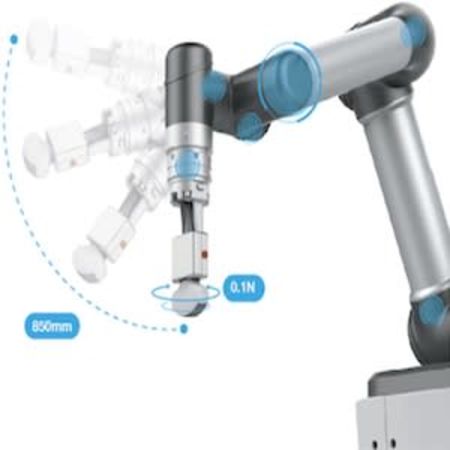In situations where there are limited medical resources and a lack of expertise, and where the risk of infection is also high, teleultrasound can provide an effective solution.
A study was conducted to explore the feasibility of the application of a 5G-powered robot-assisted teleultrasound diagnostic system in an ICU. Robot-assisted ultrasound diagnostic systems allow dynamic observation with no radiation damage. They also reduce the risk of infection of healthcare staff.
For this study, the teleultrasound diagnostic system MGIUS-R3 was used. This system was equipped with ultrasonic probes: abdominal probe, model C5-1, frequency 2.5–5.0 MHz; shallow probe, model L15-4, frequency 5.0–12.0 MHz. The doctor used the robotic arm to perform ultrasound examination via 5G network technology. Parameters could be adjusted via the control panel of the teleultrasound. There was also real-time transmission of audio, video and images.
All patients underwent robot-assisted teleultrasound examination and bedside ultrasound examination of the liver, gallbladder, pancreas, spleen, kidney, and an assessment for pleural effusion and abdominal effusion. All examinations were carried out with the consent of patients and families. In order to investigate the accuracy of the diagnosis, a second scan of the same site was performed using bedside ultrasound.
The researchers evaluated the feasibility of the application of the robot-assisted teleultrasound diagnosis system in the ICU in terms of consultation duration, image quality, and safety. They also compared diagnostic consistency and differences.
Thirty-two patients were included in the study, of which 20 were male, and 12 were female. The average age of the patients was 61 ± 20 years. All patients completed the relevant examinations. The average duration of teleultrasound diagnosis was 17 ± 7 min.
Twenty-six of the 32 patients had positive results, while 6 had negative results. Five patients had inconsistent diagnoses. A total of 17 types of diseases were found in the positive results, including thick and rough gallbladder wall, gallbladder deposits, pleural effusion, abdominal effusion, and liver cysts.
The overall diagnostic results were the same. No differences were observed in the diagnostic levels between the two examination methods. The average image quality score was 4.73 points. Robot-assisted teleultrasound examination did not result in any significant changes in the vital signs of patients as compared to before examination. Overall, no examination-related complications were observed.
Overall, the 5G-powered robot-assisted teleultrasound diagnostic system offered clear images, simple operation, relatively high levels of consistency in terms of diagnostic results, higher levels of safety. The technology appears to have considerable application value in the ICU.
Source: Critical Care
Image Credit: Critical Care























